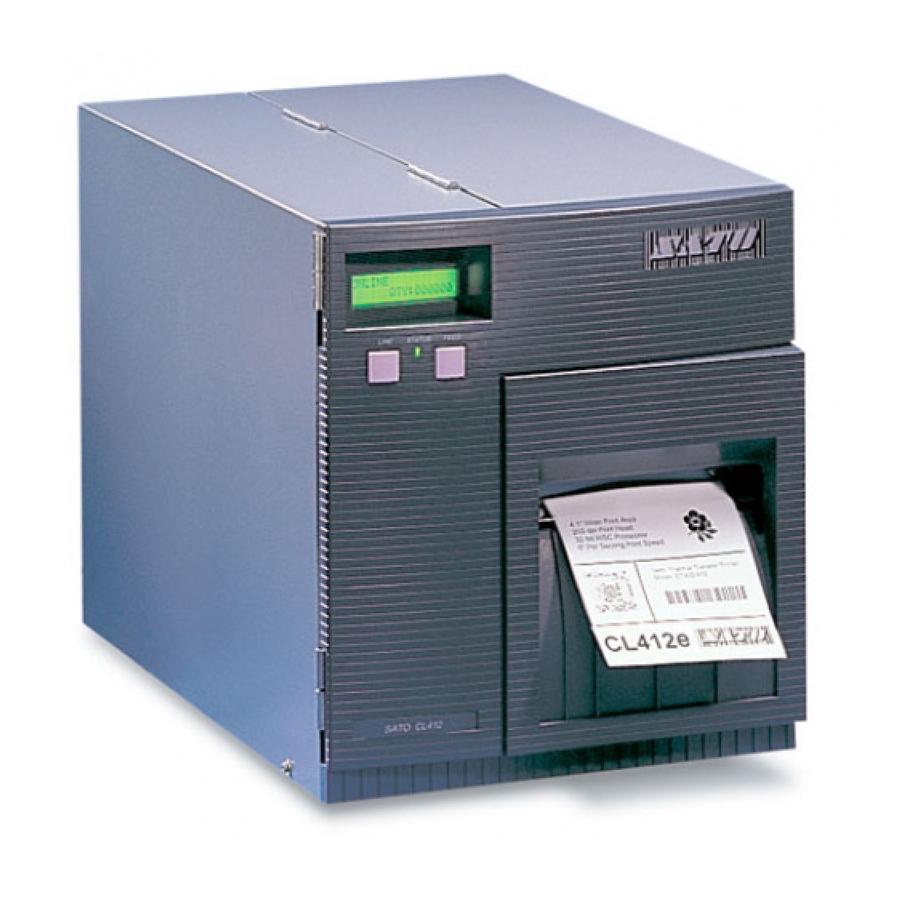
SATO CL408 Programming Reference Manual
E/pro programming reference
Hide thumbs
Also See for CL408:
- Operator and technical reference manual (249 pages) ,
- Programming manual (212 pages) ,
- Service manual (103 pages)
Table of Contents
Advertisement
Quick Links
E/Pro Programming Reference
E/Pro Programming Reference
www.satoamerica.com
www.satoamerica.com
For printer models:
For printer models:
CL408/412e
CL408/412e
CL608/612e
CL608/612e
M8400RVe
M8400RVe
M5900RVe
M5900RVe
M8459/60/85/90Se
M8459/60/85/90Se
CT400/410, D508/D512
CT400/410, D508/D512
M84Pro
M84Pro
M10e
M10e
XL400/410e
XL400/410e
LM408/412e
LM408/412e
CG208/212
CG208/212
CG408/412
CG408/412
TG308/312
TG308/312
PN: 9001096E
PN: 9001096E
Advertisement
Table of Contents











Need help?
Do you have a question about the CL408 and is the answer not in the manual?
Questions and answers